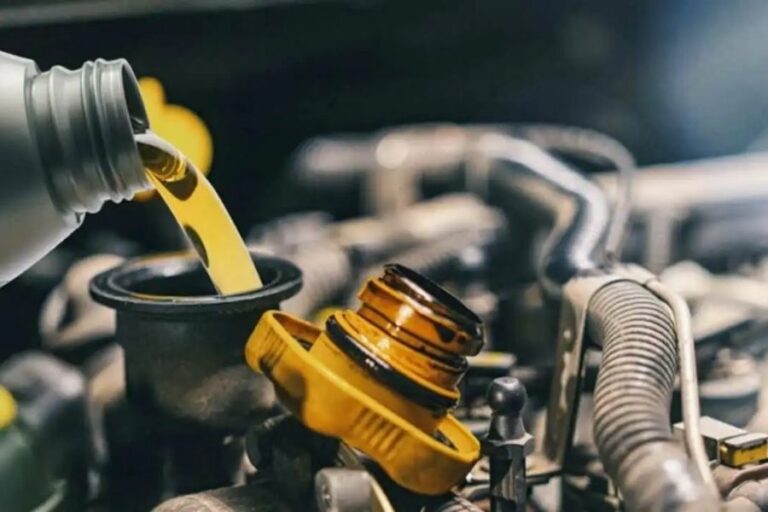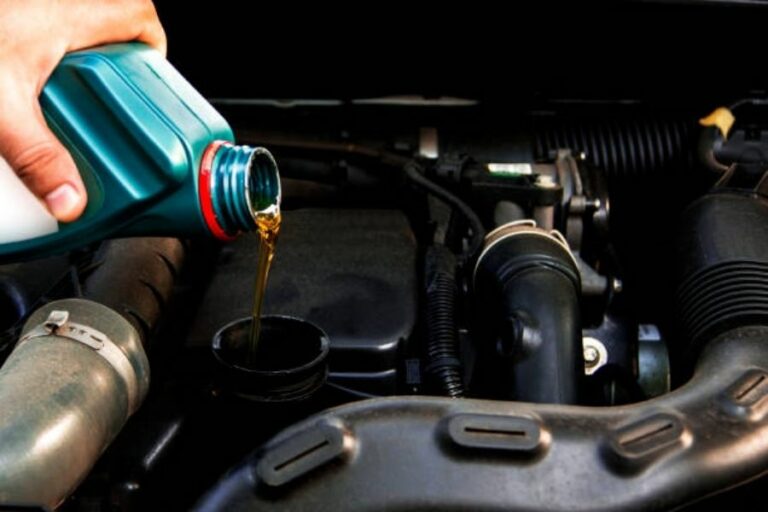Want To Find The 5.7 Hemi Oil Control Valve Location? Here’s How!
The oil control valve (in 5.7) is a crucial component that plays a crucial role in controlling oil pressure and flow, thus ensuring stable vehicle performance.
This component may occasionally become faulty and require cleaning or replacement. But it can be difficult for someone to identify the location of the oil control valve.
Don’t worry; we’ve got you covered whether you want to clean or replace your 5.7 Hemi oil control valve.
Where Is The Oil Control Valve Located In 5.7 Hemi?
If you don’t know what you’re looking for, it will be almost impossible to find and identify the oil control valve. The VVT, or Variable Valve Timing solenoid works as the oil control valve on the 5.7 Hemi engine.
The VVT oil control valve on a 5.7 Hemi engine is located underneath the intake manifold. So, to access the VVT oil control valve, you need to open the manifold and find the VVT solenoid connected inside it. You will see it held in with one 10 mm bolt.
How Does The Vvt Solenoid Controls Oil In 5.7 Hemi?
Variable valve timing systems are now standard in all contemporary vehicles to increase performance and fuel efficiency. It works in a simple manner. The solenoid valve regulates oil flow toward the camshafts using electromagnetism principles.
The technology was developed to ensure that your engine runs perfectly while still providing reliable low-RPM performance.
The oil control valve, also known as the VVT solenoid, is linked to the engine’s control unit. The ECU sends power and signals to the solenoid to adjust valve opening and camshaft timing.
Thanks to this process, the engine can precisely control the oil flow through the channels to the phasers, allowing the PCM to adjust intake pressure and optimize fuel delivery into the combustion chambers.
Read Also: Why Does 5.7 Hemi Oil Pressure Drop at Idle? (Causes & Fix)
How To Replace A Faulty Oil Control Valve In 5.7 Hemi?
A faulty VVT solenoid or oil control valve can cause many problems for your engine. You can experience symptoms like poor engine performance, poor fuel economy, a rough idle, and so on.
In these situations, it is best to replace the solenoid with a new one. Follow the steps below to replace your faulty 5.7 Hemi VVT:
Step 01: Disconnect The Battery
First, disconnect the battery to avoid damaging your car’s electrical system. Always start with the negative terminal of the battery.
Step 02: Removing Intake Manifold Connections
Then you need to remove the connections from the intake manifold. Start by disconnecting the intake tube and vacuum line. Then it won’t be difficult to detach the push and pull clip injectors.
Step 03: Prying of the Intake Manifold
The manifold should be connected to the engine with eight 8-millimeter bolts. You can easily unbolt them with a ratchet. You may need to use an angle extension bar with the ratchet to access the hard angles. Then you can just pry off the manifold with a bar.
Step 4: Locate The VVT Solenoid And Remove It
Locate the VVT solenoid on the engine. It is usually held in place by a connector and one 10 mm bolt. Use a 10 mm socket and a ratchet to remove the bolt that secures the VVT solenoid in place. After that, you can just gently wiggle and pry the VVT solenoid away from the engine.
Step 05: Install The New Solenoid
Now take the new VVT solenoid and install it by aligning it with the mounting hole and pressing it into place. Use a 10 mm socket and a ratchet to reinstall the bolt that secures the VVT solenoid in place and reattach the connector.
Step 06: Reconnect Everything
Now you can lower the manifold. Reattach the bolts and connections again. Reconnect the injectors and vacuum lines.
Step 07: Reconnect The Battery and Test
Reconnect the negative battery cable and start the engine. Check for abnormal noises. If everything is working correctly, the repair is complete.
Read Also: 5.7 HEMI Oil Pan Bolt Torque, Size and Specs (Explained)
VVT Solenoid Replacement Cost
A new solenoid should cost you around $50 to $210 for a 5.7 Hemi. And with the steps we discussed earlier, you can do it yourself. However, if you are not confident and want to get professional help, the VVT solenoid replacement can cost a bit more, considering the labor fee.
How To Clean A VVT Oil Control Valve In 5.7 Hemi?
Sometimes cleaning the VVT oil control valve can help with excess gunk build-up and potential clogging. When you see faulty VVT oil control valve indications, they could just be the result of a dirty solenoid. So, before you go and replace the solenoid, first try cleaning it to see if that fixes the problem.
Step 01: Locate The VVT Solenoid
Look underneath the 5.7 Hemi’s intake manifold for the VVT solenoid. We have already discussed how to access the VVT solenoid in the previous section, so you can follow that exact procedure to remove the solenoid.
Step 02: Clean With Mass Airflow Sensor Cleaner
First, wear safety goggles and gloves, and take a clean, soft towel. Wipe down the VVT solenoid completely with that towel. After that, spray the solenoid with “mass airflow sensor cleaner.”
Give extra focus while spraying the holes in the solenoid. If you need to, use a battery to manually open and close the solenoid to ensure cleaner reaches every part.
You will see gunk and specks of dirt coming out of it. Spraying should be done repeatedly until the dirt or dunk that is coming stops.
Read Also: Where Is The 5.7 Hemi Cylinder Deactivation Solenoid Located?
Step 03: Dry The Solenoid
Let the VVT solenoid dry once it has been appropriately cleaned. Using a mass airflow sensor is advised because it cleans and dries very fast. However, you can also use a regular valve cleaner or wd-40, but they are not as efficient as mass airflow sensor cleaners.
Step 04: Test The Solenoid
Move the solenoid manually to verify that it is rolling freely, and use a battery and 2 alligator clips to test it. If it works properly, you are good to go!
Step 05: Reinstall The Solenoid And Reassemble
Now reinstall the clean solenoid in its place and use that 10 mm bolt to secure it in its slot. Now reassemble everything in its original place. Don’t forget to reattach the fuel injectors and vacuum lines.
Step 06: Clear Error Codes
Sometimes a faulty oil control valve can show error codes on your vehicle. The errors indicate a problem associated with the VVT solenoid. Now that you have cleaned it and it is working fine, you can utilize a diagnostic tool to clear any error codes from your car.
Here is a YouTube video by Auto Repair Guys on how to clean a VVT solenoid. You can follow this for video instructions!
Read Also: 5.7 Hemi Oil Pressure Problems, Oil Type & Change Procedure
Symptoms Of A 5.7 Hemi Faulty Oil Control Valve
A malfunctioning auto component may have an impact on the vehicle as a whole. The signs and symptoms show what components are involved in that fault and where to look. Here are some typical signs of a malfunctioning VVT solenoid.
Symptom 01: Rough Idling
For smooth idling, the oil control valve adjusts the camshaft timing. If the camshaft timing is too slow, the engine will struggle to generate power due to a rough idle. You will therefore find it challenging to maintain high RPMs or pass another car.
Symptom 02: Poor Fuel Economy
The VVT solenoid helps maximize engine performance and reduce fuel consumption by opening and closing the exhaust valve at the correct time. A bad VVT solenoid can impact the fuel economy.
Symptom 03: Low Engine Performance
A defective oil control valve will significantly reduce engine performance because it won’t change the camshaft timing while the engine is accelerating. As a result, there won’t be balanced performance at low speeds and increased engine power at high speeds.
Symptom 04: Check Engine Light Indication
Your car’s main control unit, the ECU, supervises and coordinates the operation of every component. Check engine light will appear on your car’s dashboard if ECU detects a failing oil control valve.
Symptom 05: Rough Acceleration
The VVT solenoid regulates the timing of the camshaft to ensure smooth acceleration. A faulty valve may cause slow acceleration and jerky shifting between RPMs.
Symptom 06: Noise from the Engine
Inadequate oil pressure caused by a faulty oil control valve can cause rattling noises in the engine. It is because the VVT actuator does not receive accurate oil pressure when the VVT solenoid fails.
Symptom 07: Engine Misfire
An oil control valve that is faulty may fail to open and close at the proper times. The ECU sends a signal to the solenoid when the engine begins to run. Because a faulty solenoid takes longer to open and close, the fuel and air fail to properly ignite, resulting in engine misfires.
Read Also: Top 7 Best Oil for 5.7 Hemi Reviews & Buying Guide in 2023
FAQs About 5.7 hemi oil control valve location.
If you’ve read this far, we expect you to have a good understanding of the VVT solenoid. So, we’ve added some answers to the FAQs to clear up any confusion!
What causes a 5.7 Hemi engine oil control valve to fail?
A lack of oil or insufficient maintenance are common causes of an oil control valve that isn’t working properly. If your engine doesn’t have enough clean oil, the VVT solenoid’s filter might become clogged, causing the component to quit operating.
Can a 5.7 Hemi engine car operate without the VVT solenoid?
Due to the vital function the VVT solenoid plays in motor timing, it is extremely unlikely that a malfunctioning or faulty VVT solenoid will allow the motor to function (albeit ineffectively) for an extended period of time.
Are VVT 5.7 Hemi engines noisy?
VVT engines are not noisy in general, however, while starting the engine, some automobiles may make a loud clicking sound from the variable valve timing (VVT) actuator’s pin trying to attach to the pinhole.
Is it possible to disable VVT in 5.7 Hemi?
When switching to a non-VVT camshaft, the VVT system must be removed. These cams provide additional performance by providing more valve lift and a longer time. A VVT deletion kit replaces the VVT components with conventional parts by removing the VVT components.

![How To Unstick Oil Pressure Relief Valve? [5 Easy Steps]](https://carfluidpro.com/wp-content/uploads/Orange-Neon-Boxing-Match-Promotion-Youtube-Thumbnail-9.png)




